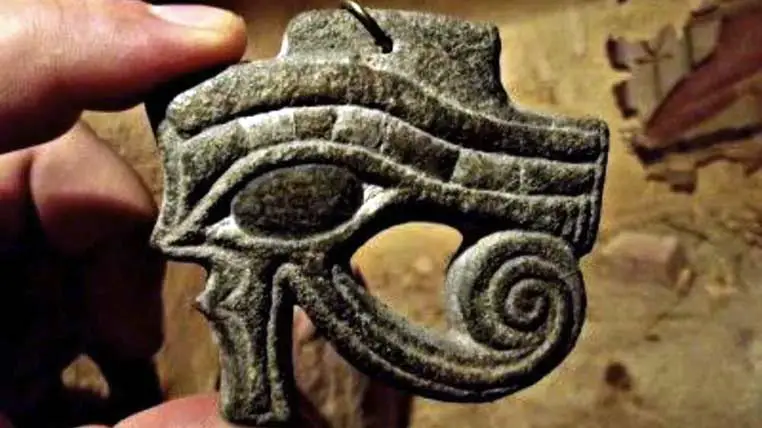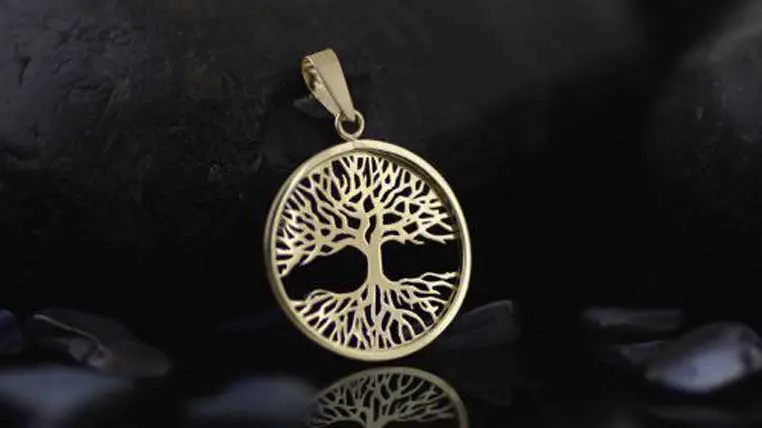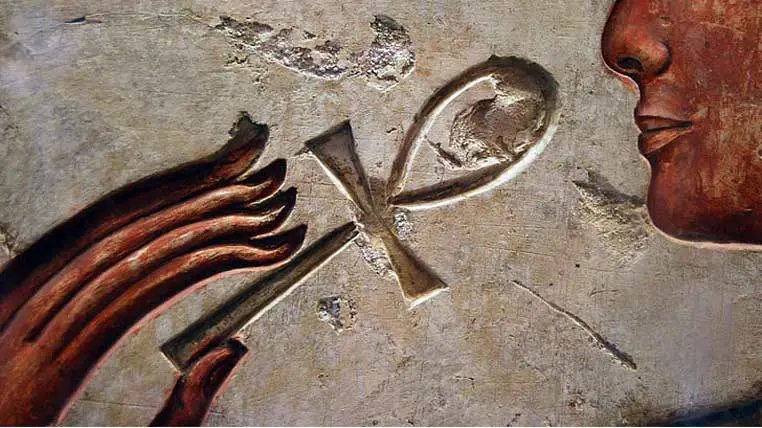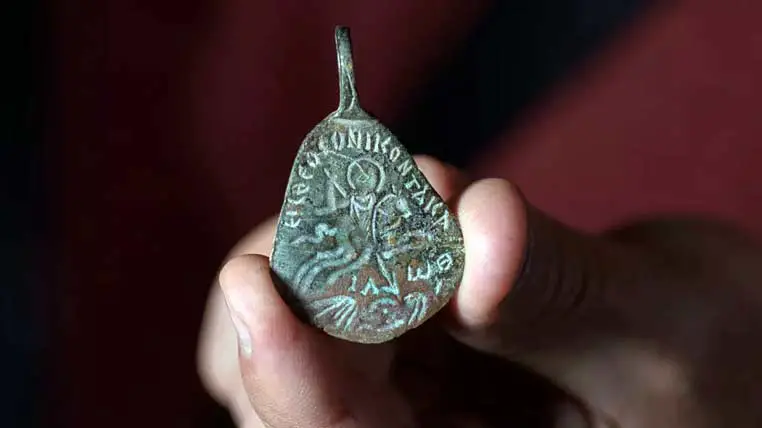Archaeological evidence shows that prehistoric amulets symbolizing fertility have been discovered near some of the oldest human remains.
These talismans, dating back to 25,000 BC, include claws, shells, horns, and crystals, engraved with symbols and having small holes, which were probably worn around the neck as necklaces.
But that’s not really a surprise since, for ages, animals have been used as symbols for amulets.
For instance, a rabbit’s foot is a popular modern amulet believed to bring luck when rubbed.
Moreover, an ibis bone, obtained by the lucky person who breaks the larger part in a competition with another person during Thanksgiving in the United States, is believed to fulfill wishes.
Amulets in Ancient Egypt
The use of amulets in Ancient Egypt dates back to the emergence of the Roman Empire in the first century BC when charms were already being worn as a means of defense and good luck.
Egyptians considered talismans necessary for the protection of vineyards and the dead. Often, an amulet depicting a heart was placed in graves so the deceased could present it on Judgment Day.
The resemblance to scarabs, a type of beetle, was also important.
A scarab rolls its egg in mud or dung and moves it to a safe place. The Egyptians considered this act a metaphor for the Sun’s daily journey across the sky.
The scarab amulet was a common symbol of regeneration and was thus placed in the grave.
The Sumerians, contemporaries of the Egyptians and inhabitants of ancient Mesopotamia (present-day Iraq), had their talismans inscribed with images of gods and animals.
These images were drawn and cast in molds, then printed on all kinds of objects, from ceramics to door handles.

The emblem on the seal represented a guardian spirit who was to bring misfortune to those who dared to open the protected compartment without the owner’s permission.
The treasure of the Egyptian pharaoh Tutankhamun (1370-1352 BC) contains numerous crystals in the form of jewelry and precious stones, serving as amulets of various shapes.
Amulets and Their Protective Power
Amulets are ornaments with long-held symbolic meaning, with many believing they possess magical and religious powers.
While they are still popular as jewelry today, those who believe in their mystical powers often wear them as protective talismans.
Many amulets have religious significance.
For example, ancient Jews wore amulets around their necks containing strips of parchment on which the laws of God were written.
In addition to the Torah, which comprises the five books of the Old Testament, holy books such as the Bible (for Christians), Vedas (for Hindus), Koran (for Muslims), and Avesta (for Zoroastrians) were believed to bring luck and ward off evil.
Muslims today frequently wear amulets containing a miniature version of the Quran, enclosed in metal and worn around the neck, to gain spiritual power.
Some amulets are inscribed with a specific form of the name of Allah. In contrast, others consist of fragments of written parchment or herbs, often for healing purposes.
These “kamiyyas,” as they are called in Talmudic literature, are typically worn on a necklace, bracelet, or ring.
The “mezuzah” is another type of parchment amulet, with the Hebrew term referring to the doorpost.
Moses, who lived in the 14th to 13th century BC, commanded the Israelites to inscribe the words “Hear, Israel, the Lord is our God, the Lord is One” on the doorposts of all houses.
Today, many modern Jewish households continue to attach an amulet with those words to their doors or wear them as gold jewelry for good luck.
The first Christians inscribed the word “ichthys” on their amulets, which means “fish” in Greek and contained the Greek initials for Jesus Christ, Son of God, the Savior. Even today, the fish symbol continues to be significant for Christians.
The shape and image of amulets were believed to provide strength, vitality, alertness, and the ability to use one’s abilities.
The wedge with the tip pointing upwards, with the lead thread hanging in the middle of the angle, is an image with amulet virtues belonging to both the religious art of ancient Egypt and the Masonic symbolism of today, which is believed to guarantee permanent stability.
Scarab, painted eye, Isis’s knot, and the cross with a toft are among the most widespread and powerful of these talismans.
A simple red thread is the simplest of all amulets, with threads tied to the wrist, ankle, or neck remaining popular today and throughout history.
While other amulets may lose their protective power when lost or broken, a broken thread releases its defensive magic when it breaks naturally.
Therefore, a broken or lost amulet can cause worry, but a broken thread signals the beginning of success.
What Are the Most Powerful Talismans?
Amulets are believed to possess magical properties, capable of repelling negative energy and attracting positive vibes.
These protective objects can be worn as pendants around the neck or as bracelets on the hand.
It must not be worn in conjunction with any other good luck charm to maximize the power of an amulet, as they would cancel each other out.
Furthermore, amulets are not transferable, as they require a personal connection with the wearer to amplify their energies.

The Tree of Life, a Symbol of Courage
The Tree of Life is an amulet that bestows confidence, intuition, and courage upon its bearer. It symbolizes life and rebirth, representing the four primal elements – earth, fire, air, and water.
Each year, the Tree of Life regenerates by absorbing the earth’s and water’s nutrients. It communicates with its surroundings through the air. Fire is associated with the sun’s power, a light source.
Wearing the Tree of Life amulet inspires bravery, inner strength, and stability.
The Celtic Cross, a Symbol of Balance
The Celtic Cross is also known as “Odin’s Cross,” after the Norse god from Nordic mythology.
The circle in the center represents the earth, while the arms of the cross symbolize the cardinal points.
Legend has it that St. Patrick, who spread Christianity in Ireland, used the Celtic Cross as a symbol of both religions to make it easier for the Nordics to embrace the word of Jesus Christ.
The Celtic Cross is a Christian symbol that protects against curses and spells.
It is also associated with balance and inner peace, as it connects to the primordial element of earth, bringing harmony and stability to the wearer’s life.
The Hand of Fatima, a Powerful Amulet
The Hand of Fatima is a potent talisman that provides protection against the evil eye.
According to ancient legend, Fatima caught her husband coming home with another woman while preparing a meal.
Filled with anger, she inadvertently stirred the food with her hand instead of a spoon. Her husband noticed this, and thus, the amulet that symbolizes her hand is associated with patience and loyalty.
Unlike other amulets that can be worn as pendants, the Hand of Fatima must be worn as a bracelet.
The Hand of Fatima is a sacred amulet in North Africa and the Middle East, often used as protection against negative energies while attracting positive ones.
The talisman comprises three powerful symbols: the eye, the hand, and the number five.
The eye blocks negative energies, the hand signifies divine protection, and the number five balances energy.
Red is the color of power and passion. When adorned with a red stone, the amulet attracts abundance and luck.
It is believed that the Hand of Fatima is beneficial to the one who wears it, especially when at a crossroads in life or seeking to change their destiny.

The Egyptian Cross, a Symbol of Life
The Egyptian cross, also known as the Ankh, is the hieroglyphic symbol of life.
This sign was considered the key to the Nile, and water was associated with rebirth. It is one of the most frequent hieroglyphs, and gods were depicted holding the cross of life during coronation ceremonies.
It is said that the Ankh is the first cross, or the original cross, and often appears in the hands of important Egyptian figures such as kings, pharaohs, and even gods.
Osiris, Isis, and Ra all hold the Ankh, a symbol of life and death.
The Egyptian cross represents the water, air, and sun, which provided and sustained life in ancient Egyptian culture.
Wearing the Ankh amulet is believed to bestow the wearer with the sixth sense and offer protection from the Egyptian gods.
The Seal of Solomon, a Symbol of Wisdom
The Seal of Solomon, also known as the Ring of Solomon, is one of the most sacred relics, and the legend says that King Solomon received it from Heaven.
Archaeologists have searched for this holy seal for centuries, yet without success.
It is not known precisely what the seal looked like, but it is believed to have had the shape of a ring.

Its circular shape symbolizes the cosmic order and the interaction between the elements of fire and air.
King Solomon was known as one of the wisest kings of his time, and his ring became a symbol of wisdom.
Some versions of the story depict the star of David, King Solomon’s father, on the ring. In other versions, the ring was made of metal, with four precious stones, and had God’s name engraved on it.
The six-pointed star is also known as the “Shield of David,” symbolizing harmony.
Each corner of the star represents the six attributes of God: infinity, wisdom, holiness, sovereignty, omniscience, and faith.
It is said that the Seal of Solomon amulet has a powerful energetic charge that brings a feeling of well-being and helps the wearer make the right decisions.
At Ancient Theory we only use trusted sources to document our articles. Such relevant sources include authentic documents, newspaper and magazine articles, established authors, or reputable websites.
- ANKH - Egyptian Symbol of Life. nps.gov. [Source]
- Amulet. wikipedia.org. [Source]
- Tracey Minkin - The Powerful Legacy of Talismans and Amulets in Modern Society.
- Hamsa Hand Meaning: Discover How To Wear The Hand of God. thepeachbox.com.
- Justin Harris - The Origin Story And Meaning Of The Celtic Cross.
- Celtic cross. wikipedia.org. [Source]
- Nigel Pennick - The Ancestral Power of Amulets, Talismans, and Mascots. Destiny Books, 2021.






